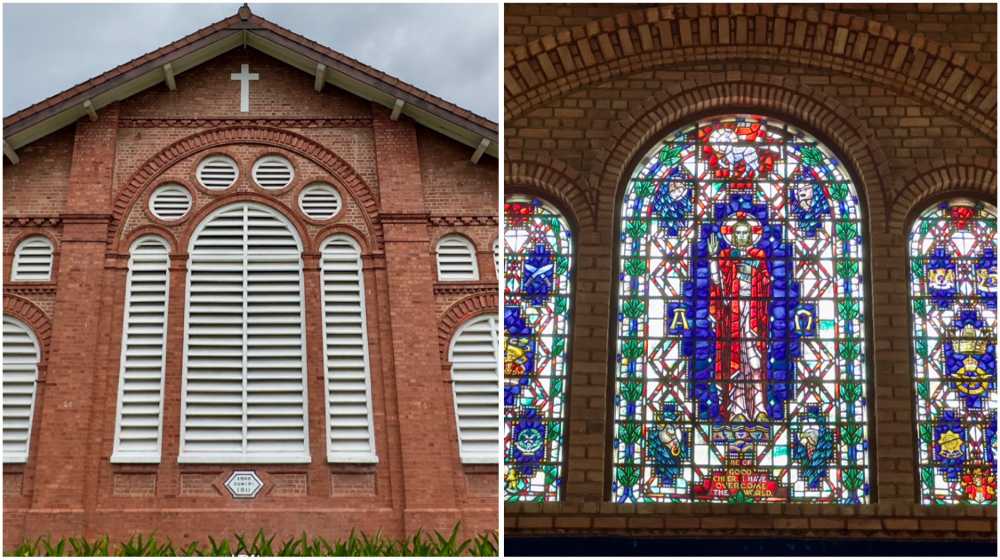National Monuments Of Singapore: Saint George's Church
What is a National Monument? Who gazettes them? How many national monuments are there in Singapore? To date, the Preservation of Sites and Monuments, a division of National Heritage Board, has identified and gazetted 75 buildings, structures and sites of national significance as an integral part of Singapore’s built heritage.
And we're here to tell you all about them - one National Monument at a time!
You've probably passed by or stepped into more than a few of them without realising they were National Monuments: Al-Abrar Mosque, Asian Civilisations Museum, the Civilian War Memorial, Saint Andrew's Cathedral, the Esplanade Park Memorials, Fort Siloso on Sentosa - no need to plan an itinerary for friends visiting from overseas; just show them this article ✌️
In this edition, we take a more in-depth look at a church in Singapore dedicated to Saint George, the soldier-saint and Patron of England, Saint George's Church.
📍 Location
Saint George's Church was the 15th building to be gazetted as a National Monument of Singapore. The MRT station nearest to it is Napier.
📅 Significant dates
Dates built:
- 1861: Tanglin Barracks was built
- 1870-1890: An unnamed church in the area near Tanglin Barracks was constructed
- 1910-1913: Saint George's Church was erected
Milestones:
- 10 Nov 1946: A re-dedication ceremony was held on Remembrance Sunday, post-World War Two
- 1971: Saint George's Church became a civilian church
Date gazetted: 10 Nov 1978
📜 History
Saint George’s Church is nestled in the peaceful surroundings off Minden Road, just a short distance from the lively shopping hubbub of Orchard Road. Originally established as a garrison church, it stands as a reminder of the area's colonial past when Tanglin Barracks served as the General Headquarters for the British Far East Land Forces.
The history of Saint George’s Church stretches back nearly 50 years before the current building was erected. After the Suez Canal's opening in 1869, Singapore's garrison was reinforced, following the creation of an army barracks at Tanglin in 1861. Major C.H. Malan, a man known for his strong religious beliefs, initially took on the role of lay chaplain (a member of the church who has received training in spiritual care).
In 1871, the garrison appointed its first ordained, full-time minister. Although a proper church was constructed between 1870 and 1890, its precise location remains unknown till today.
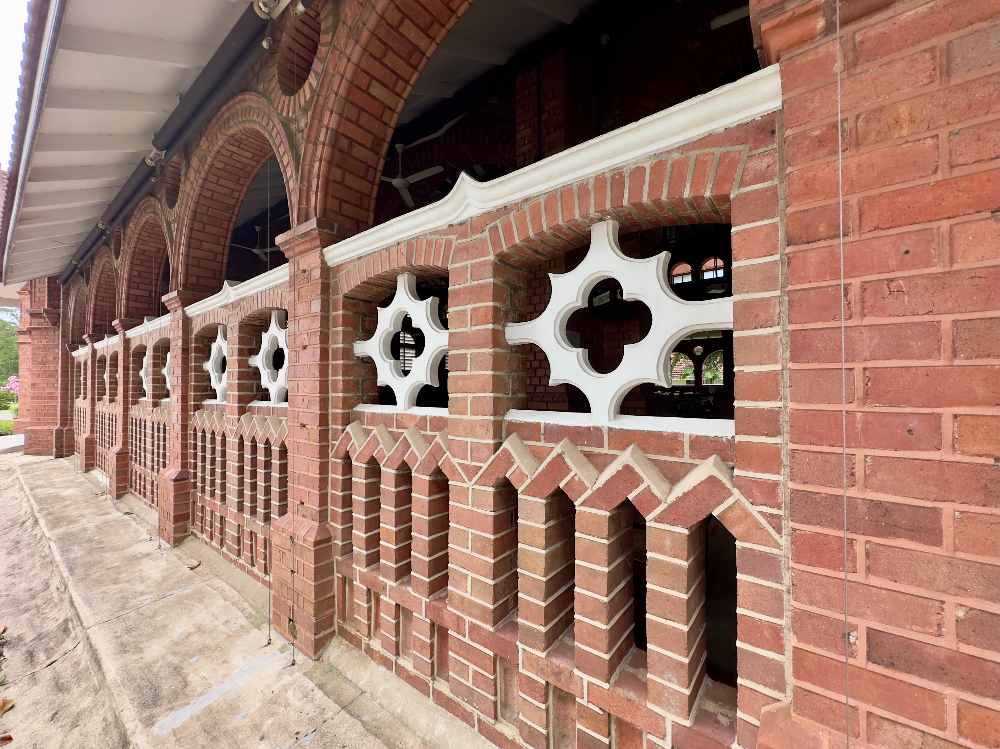 IMAGE: NG KAI
IMAGE: NG KAI
The present brick church building began construction in 1910, likely to accommodate the growing number of British soldiers stationed at Tanglin Barracks. When finished in 1913, it could accommodate 650 people. The church was also dedicated to Saint George, the soldier-saint and Patron of England.
During the Japanese Occupation (1942-1945), the Japanese army converted Saint George’s Church into an ammunition storage facility. It is said that before the Japanese invasion, Garrison Chaplain Reverend H.C. Todd removed the stained-glass windows behind the altar and hid them for safekeeping. Sadly, he did not survive the war, and the location of the stained-glass windows was lost with him, despite efforts to recover them.
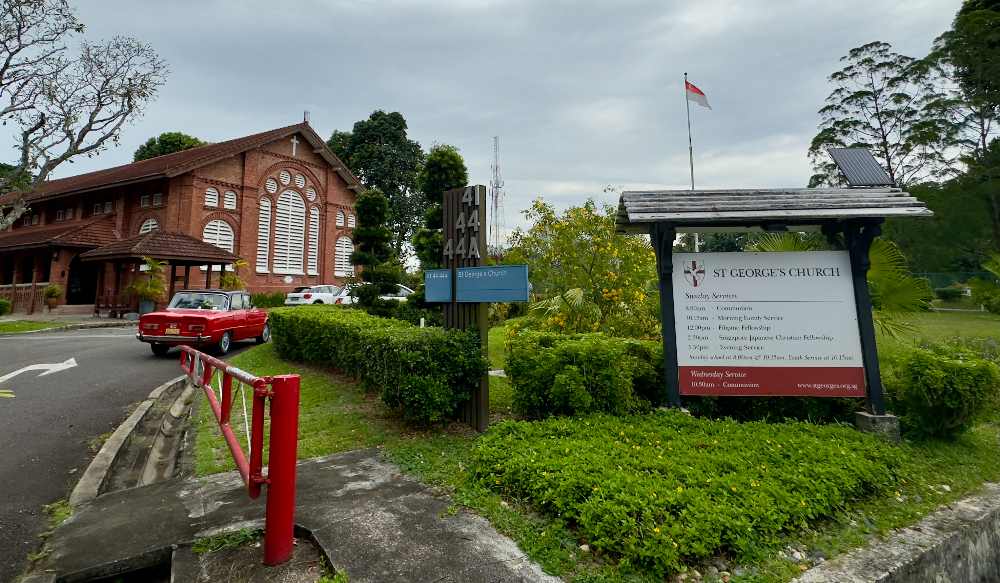 IMAGE: NG KAI
IMAGE: NG KAI
Following the end of World War Two, restoration of the church commenced, and Christian ministry resumed at Tanglin Barracks. On 6 Oct 1946, the first post-war services were held in the restored church, with its rededication taking place on Remembrance Sunday, 10 Nov.
In the years that followed, the congregation grew steadily, and included both military personnel and civilians of Chinese and Indian descent. Saint Andrew’s Cathedral also utilised the church as an additional worship space for the Chinese Anglican community.
A century after the church’s construction, the British Government announced the scaling back of its military presence east of the Suez. When British forces left Singapore in 1971, Saint George’s Church transitioned into a civilian parish, achieving full parish status in November 1973.
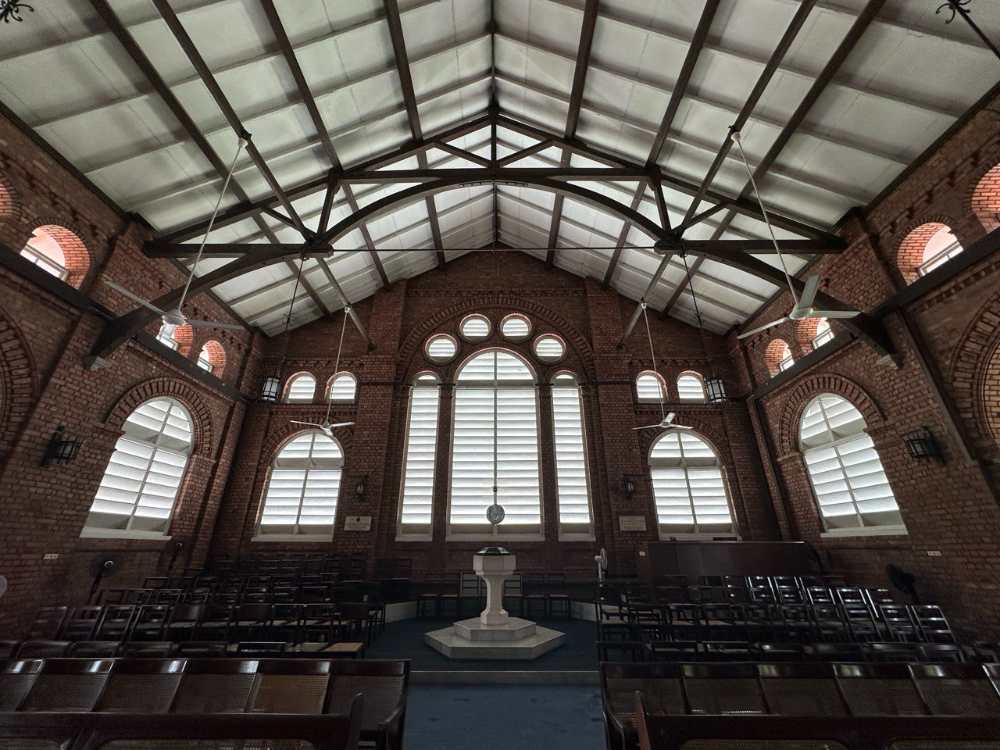 IMAGE: NG KAI
IMAGE: NG KAI
📐 Design and architecture
The church’s architect, Captain William H. Stanbury of the Royal Engineers, drew inspiration from Romanesque basilicas in Europe, incorporating extensive Romanesque elements such as arches, piers, and columns into his design.
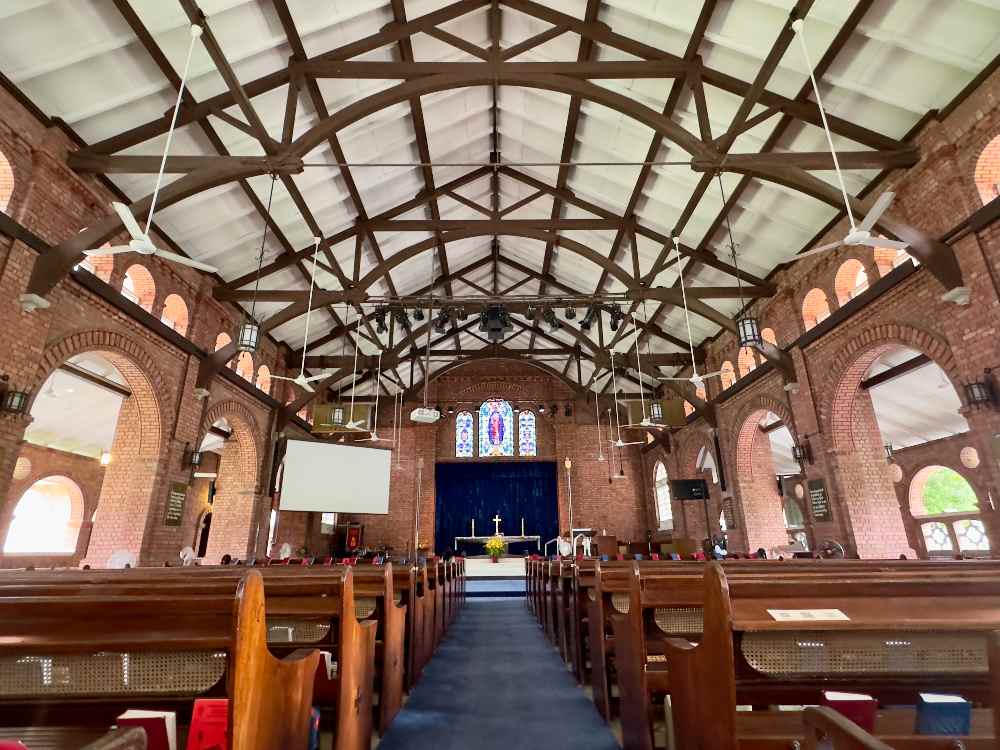 IMAGE: NG KAI
IMAGE: NG KAI
However, unlike traditional European Romanesque churches, which often feature few small windows, Saint George’s Church has large arches and clerestory openings along the upper section of the nave (the long, central part of a church building), allowing in natural light and ventilation.
The structure’s large single-gabled roof is supported by exposed English-style tropical hardwood trusses (a framework, typically consisting of rafters, posts, and struts, supporting a roof, bridge, or other structure), and both the interior and exterior are built using fair-faced red bricks.
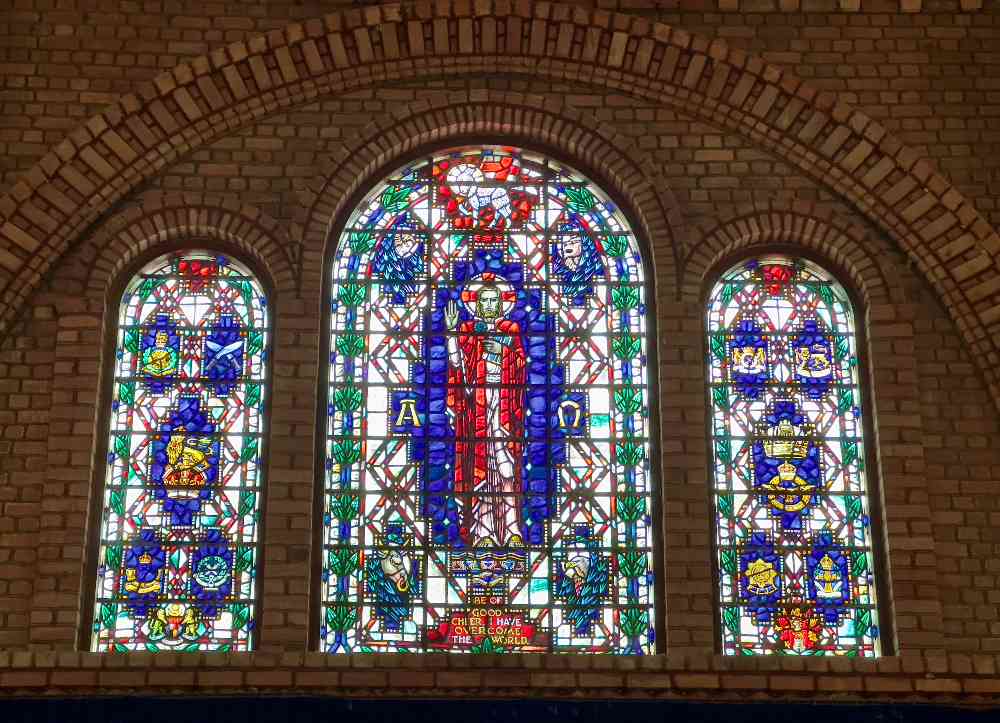 IMAGE: NG KAI
IMAGE: NG KAI
In 1955, renowned stained-glass designer Gordon Webster was commissioned to create new panels for the windows behind the altar to replace those lost during the war. These windows, unveiled on 10 Jul 1955, feature the Risen Christ, with one hand raised in blessing and the other holding a Bible. Beneath Him is a verse from the Gospel of Saint John: "Be of good cheer, I have overcome the world."
The surrounding windows depict the badges of forces and regiments that served in British Malaya and Singapore, including the Royal Marines, Gurkha Regiment, and King’s African Rifles, among others.
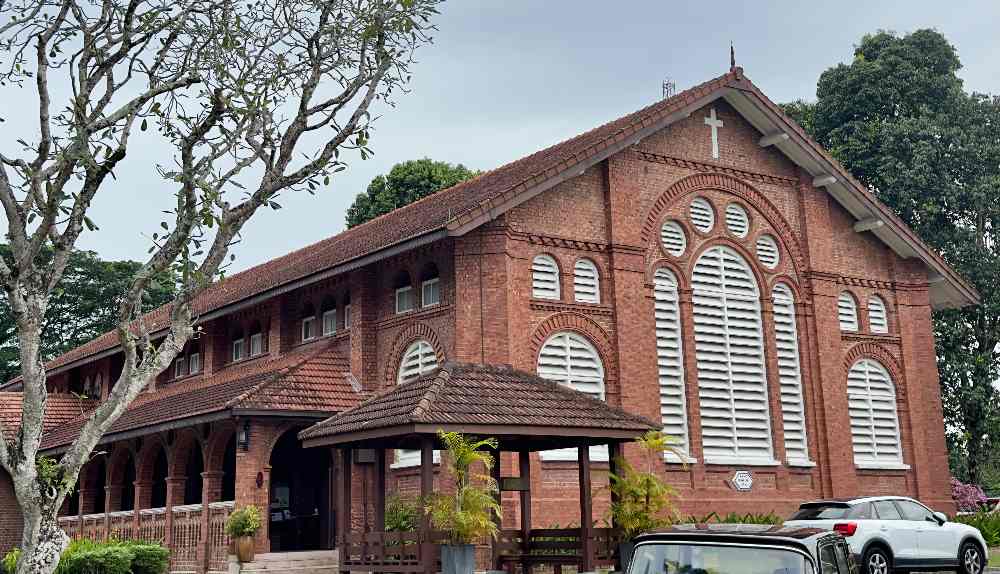 IMAGE: NG KAI
IMAGE: NG KAI
Standing outside the church is a lychgate, a roofed gateway that traditionally marks the entrance to English churchyards. The current structure, built in 1984, is a replica of the original erected at Changi Camp cemetery by British prisoners of war during the Japanese Occupation.
The original lychgate was relocated to Saint George’s Church in 1952, when the graves were moved to the Commonwealth War Cemetery in Kranji. Upon the British military's withdrawal in 1971, the lychgate was dismantled, transported to England, and reassembled at the Queen’s Division Depot in Hertfordshire, England.
🕖 Opening hours
The church holds different services on various days of the week. Find out more here.
🎟️ Admission
Entry is free.
For the latest updates on Wonderwall.sg, be sure to follow us on TikTok, Telegram, Instagram, and Facebook. If you have a story idea for us, email us at [email protected].







